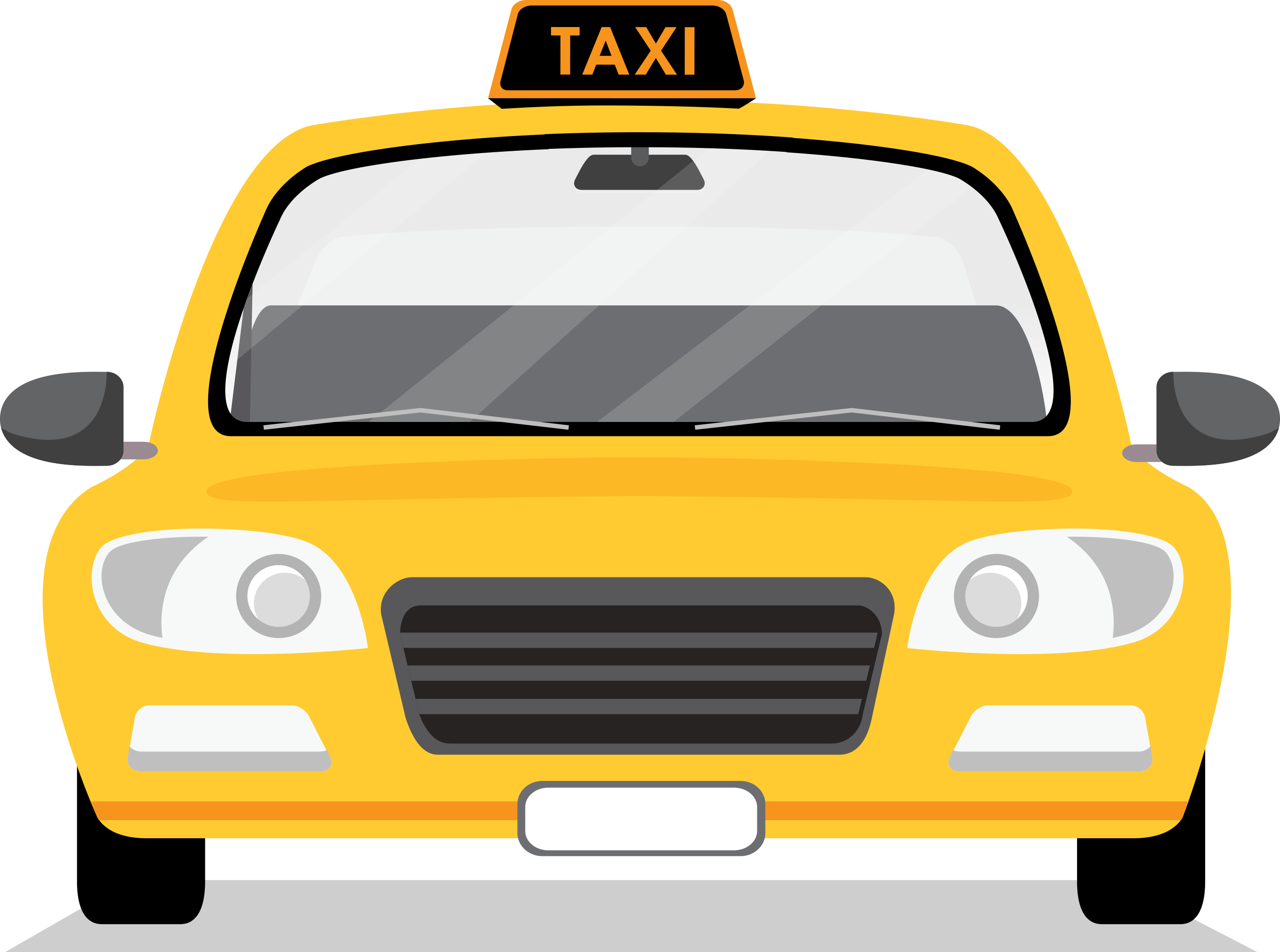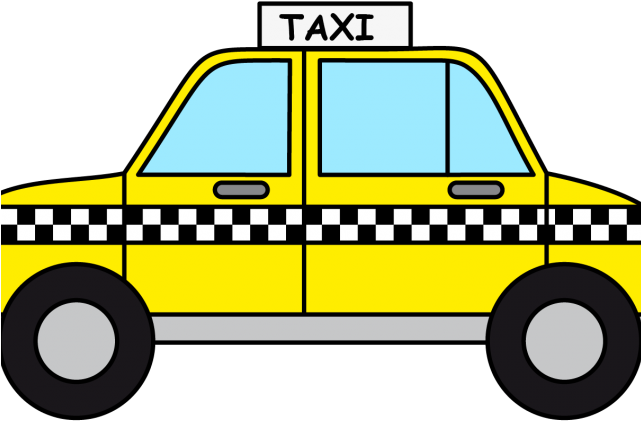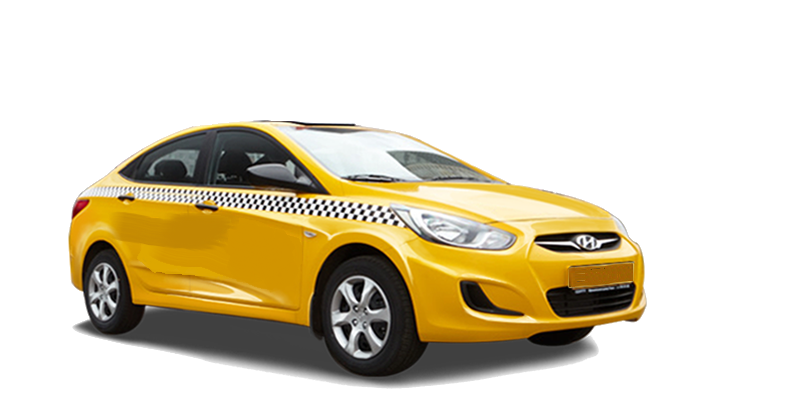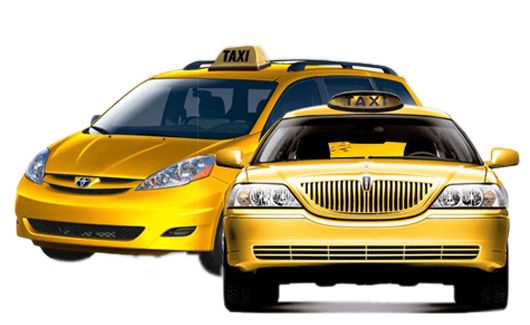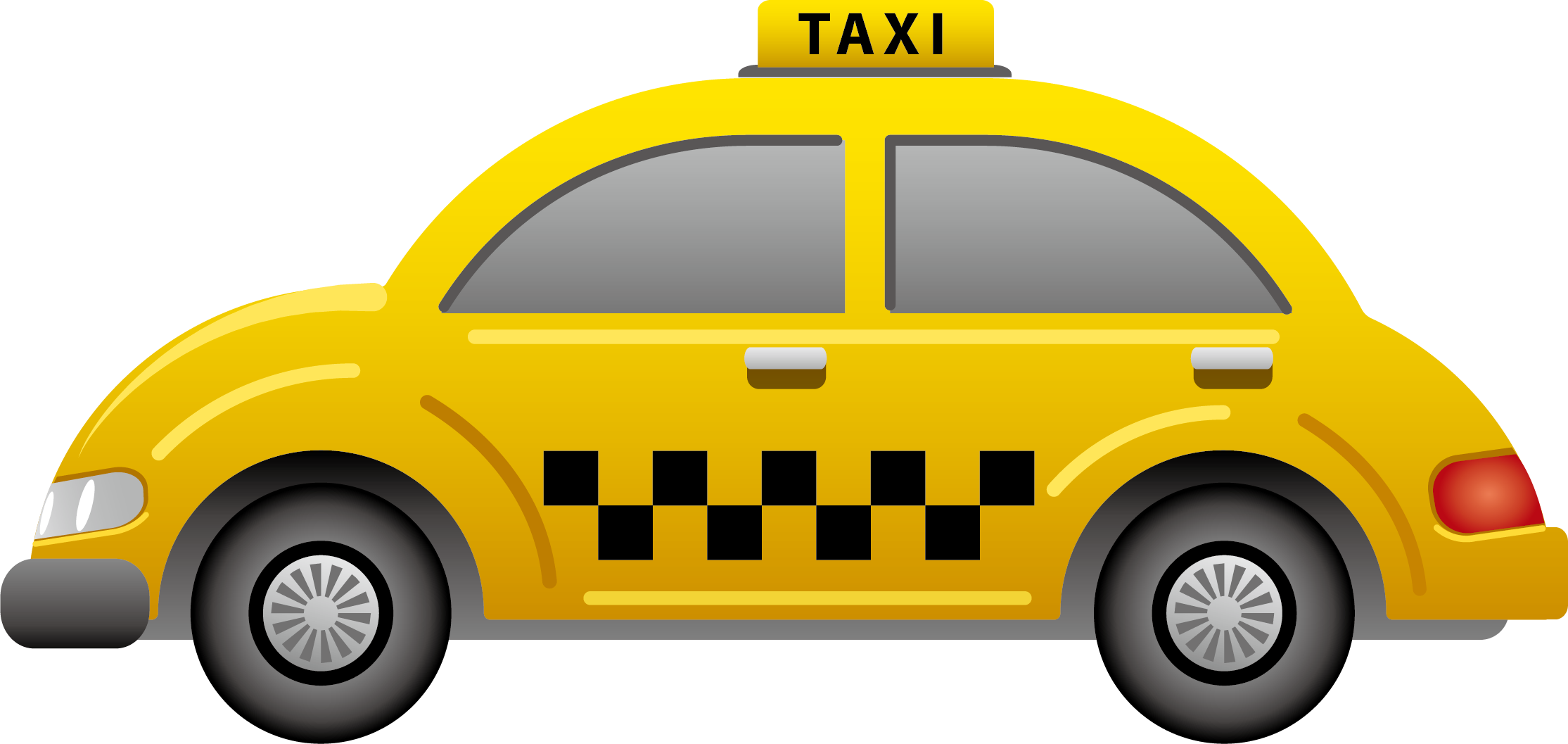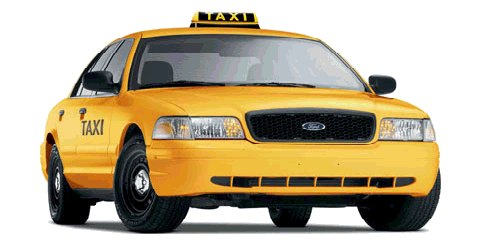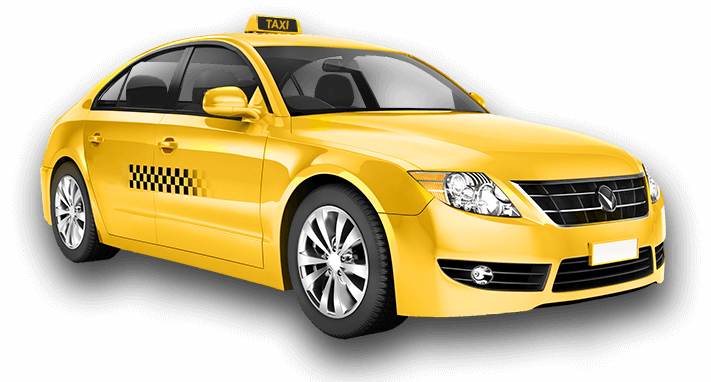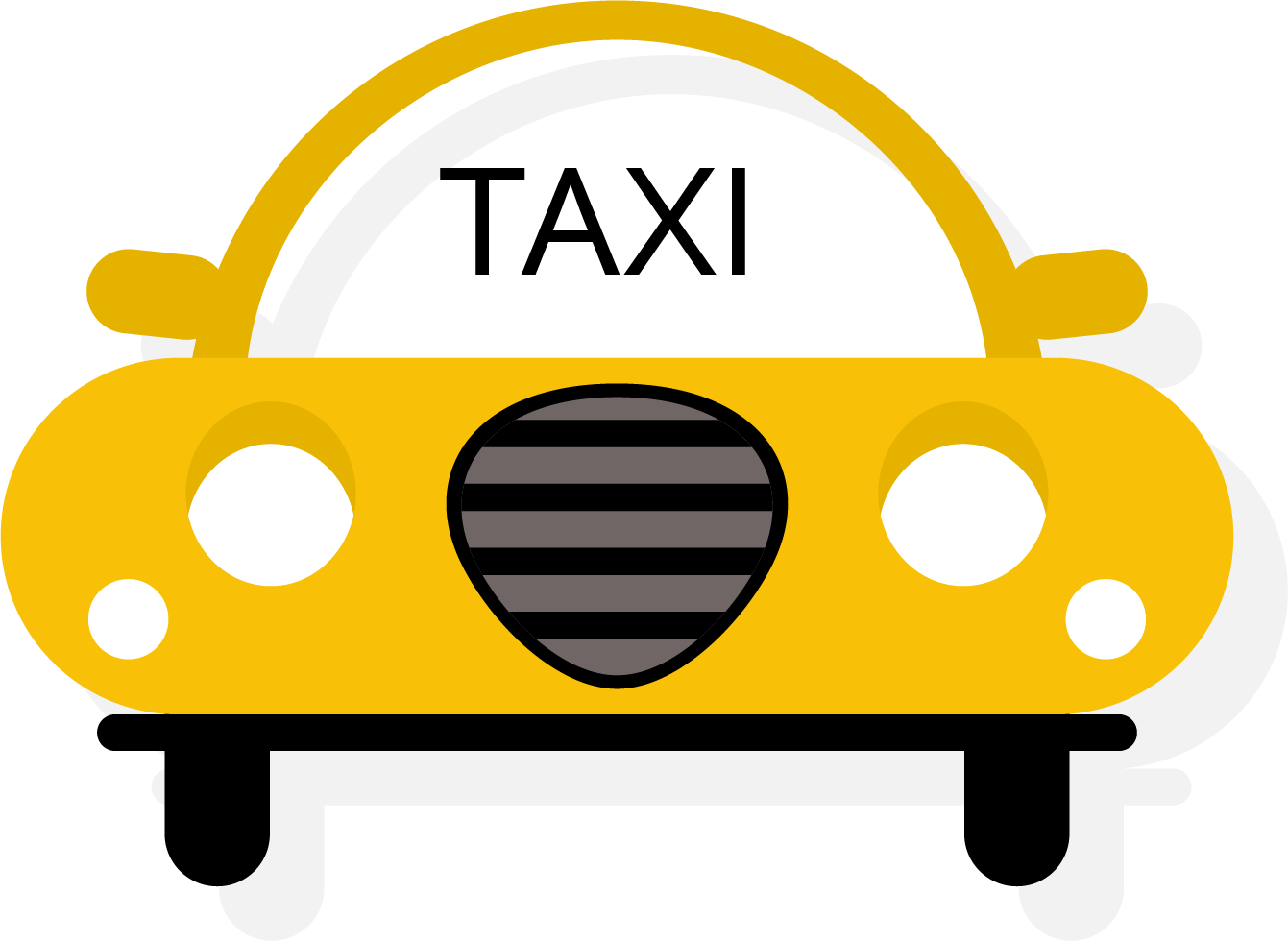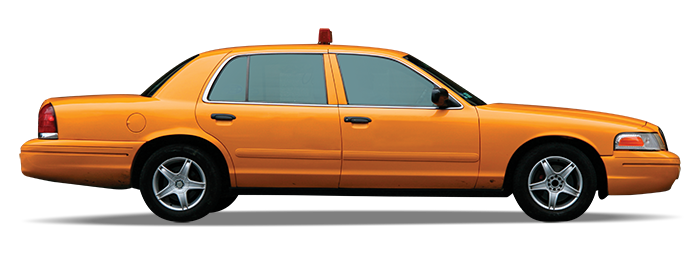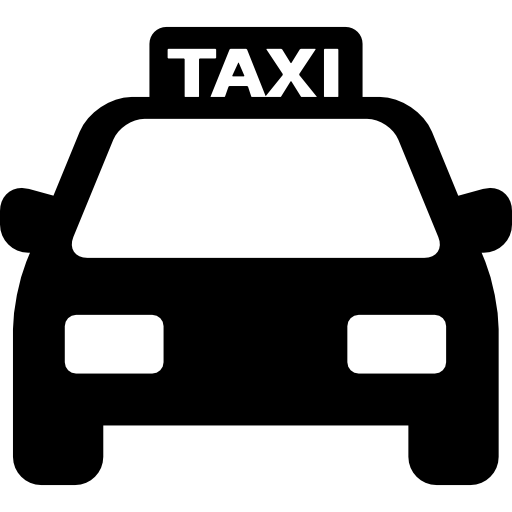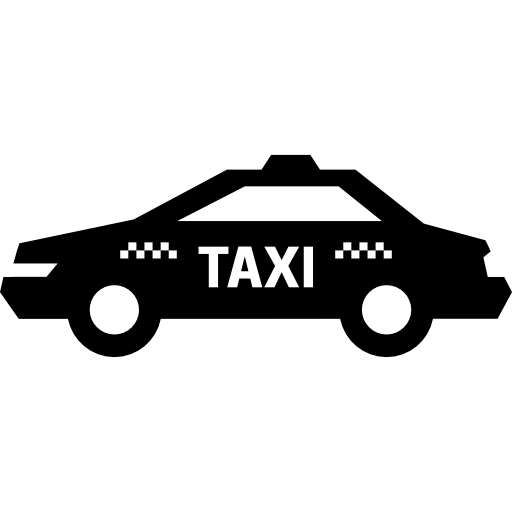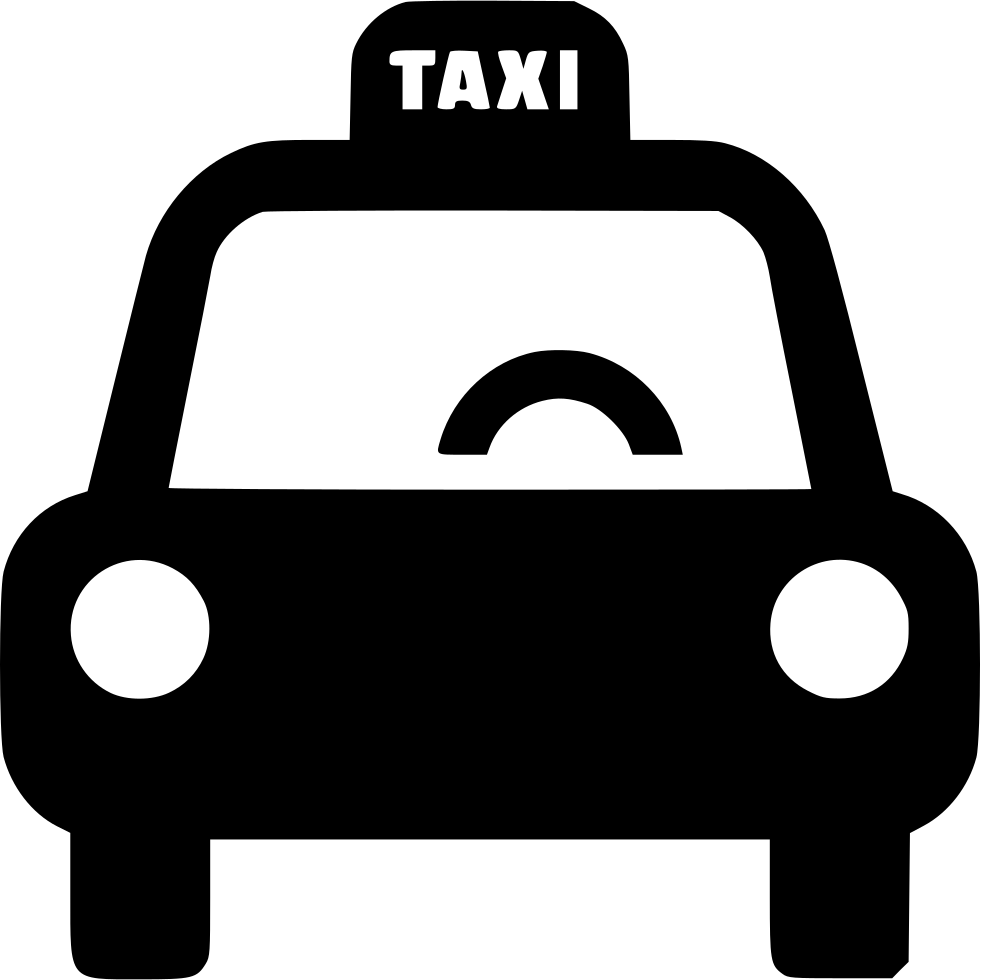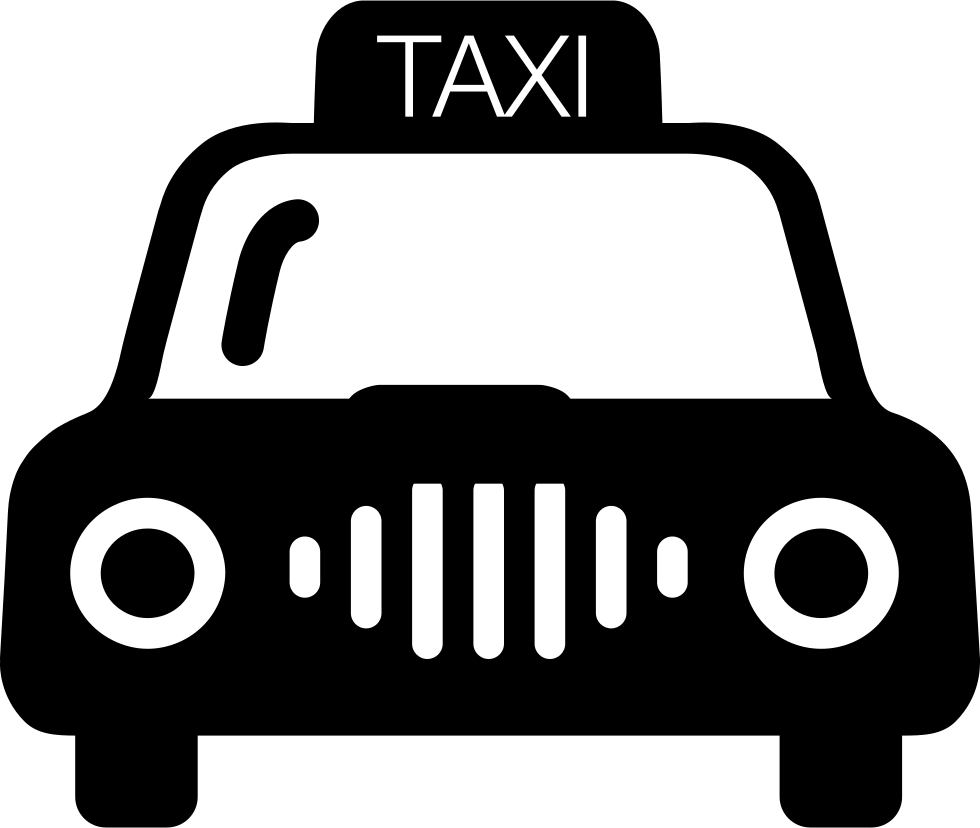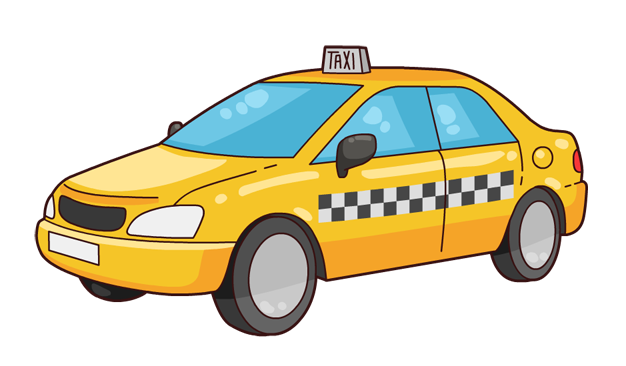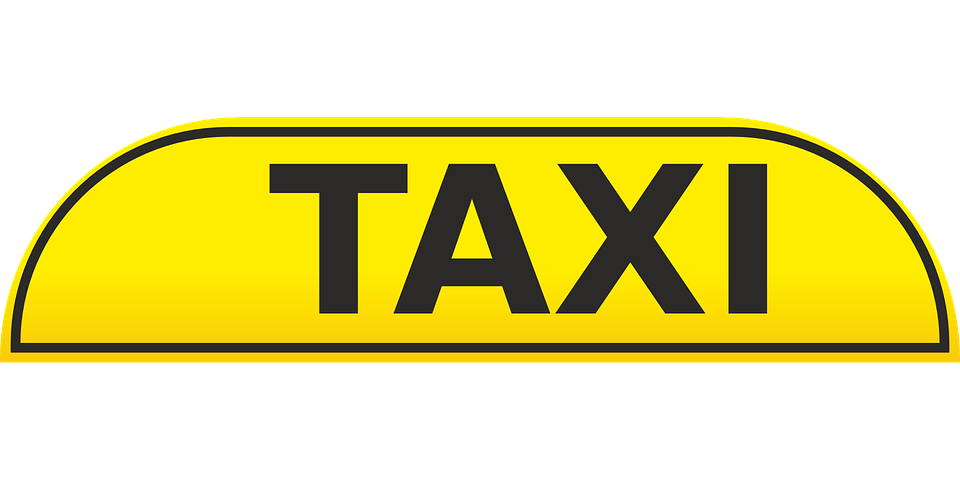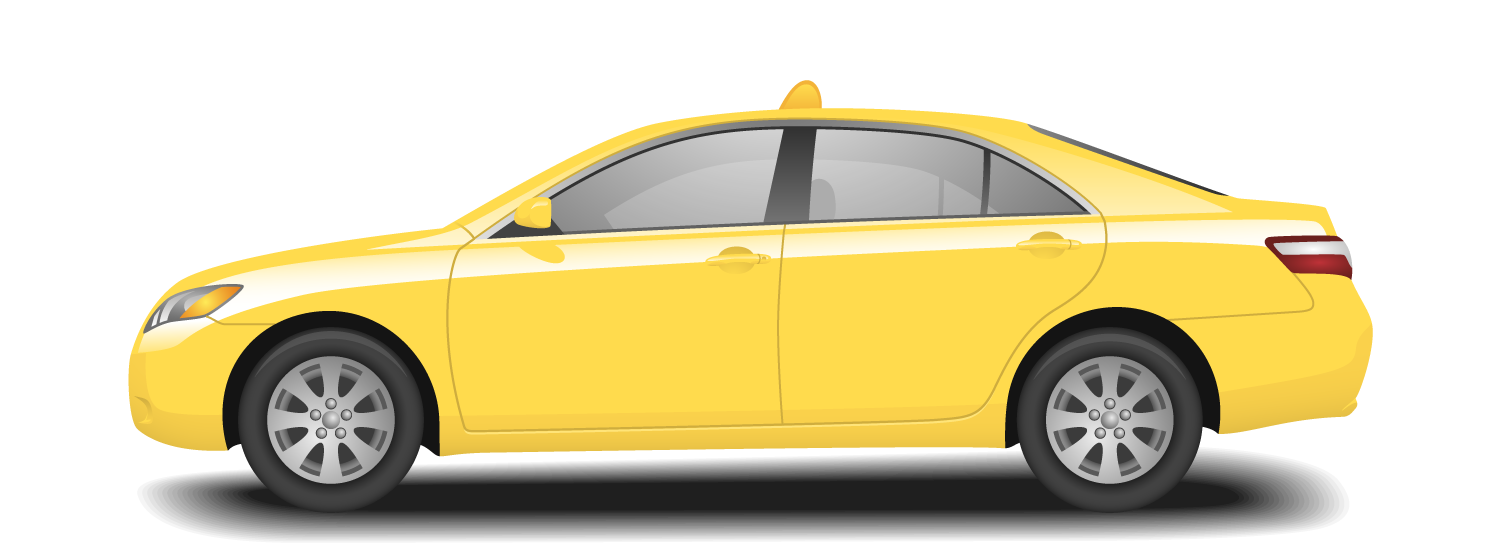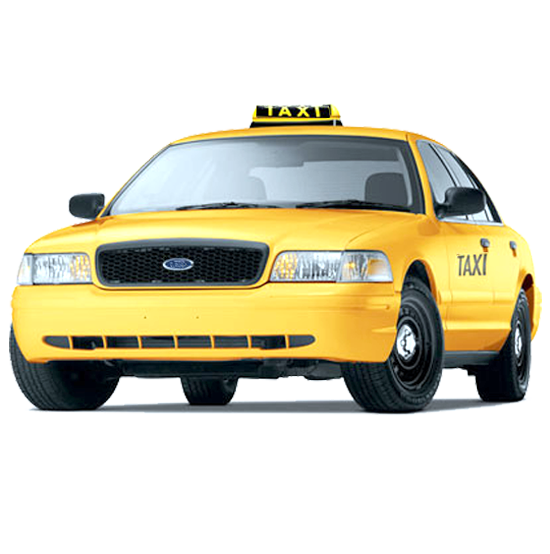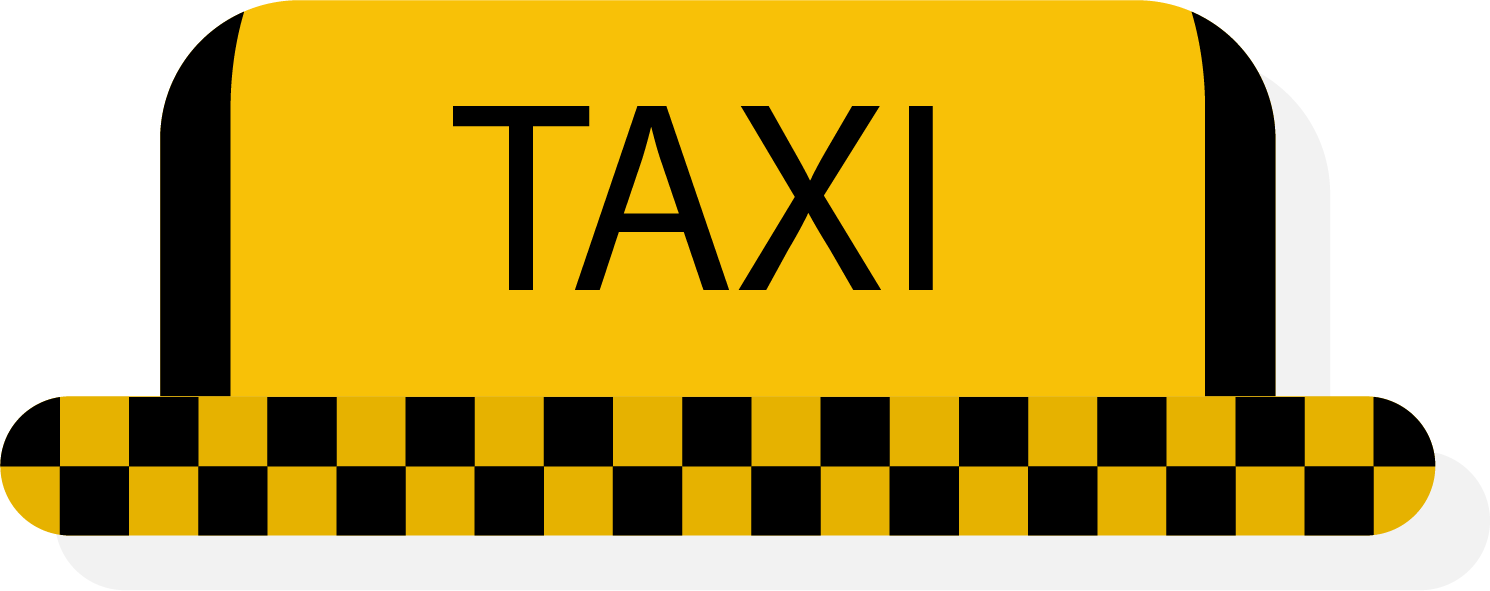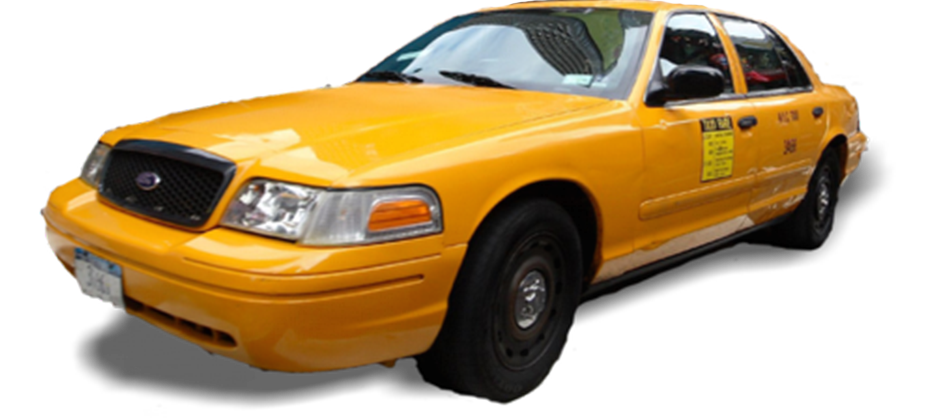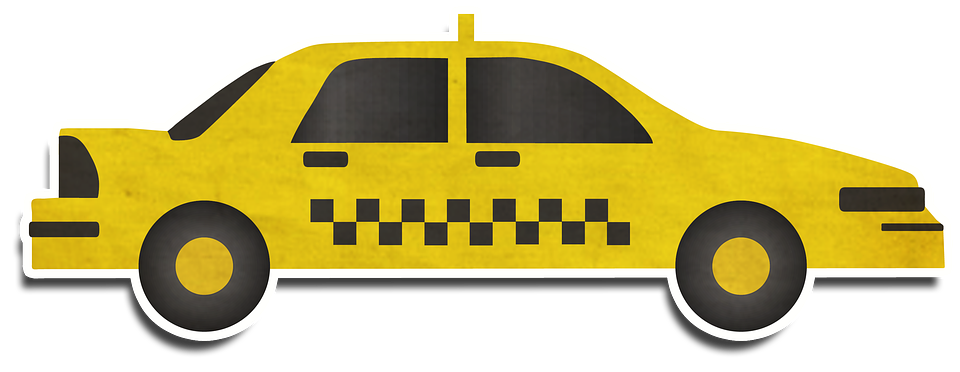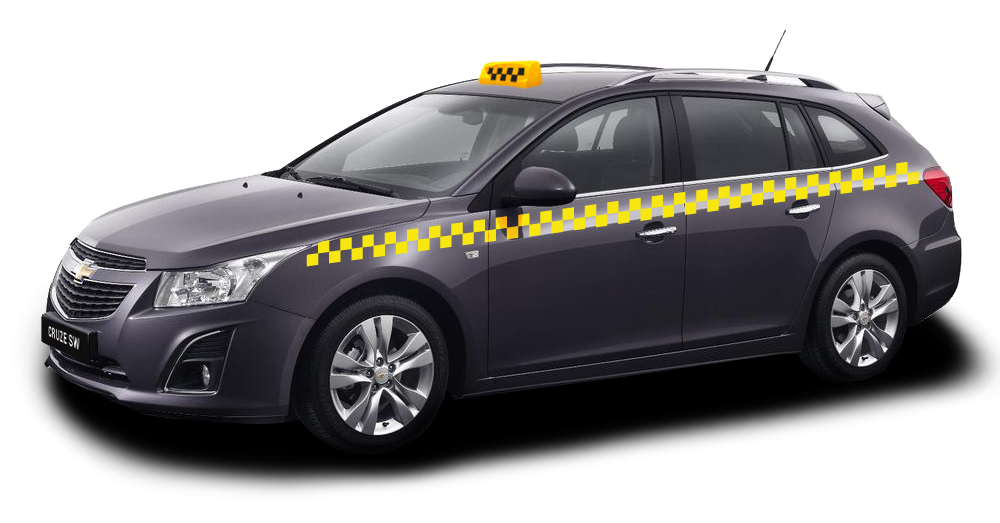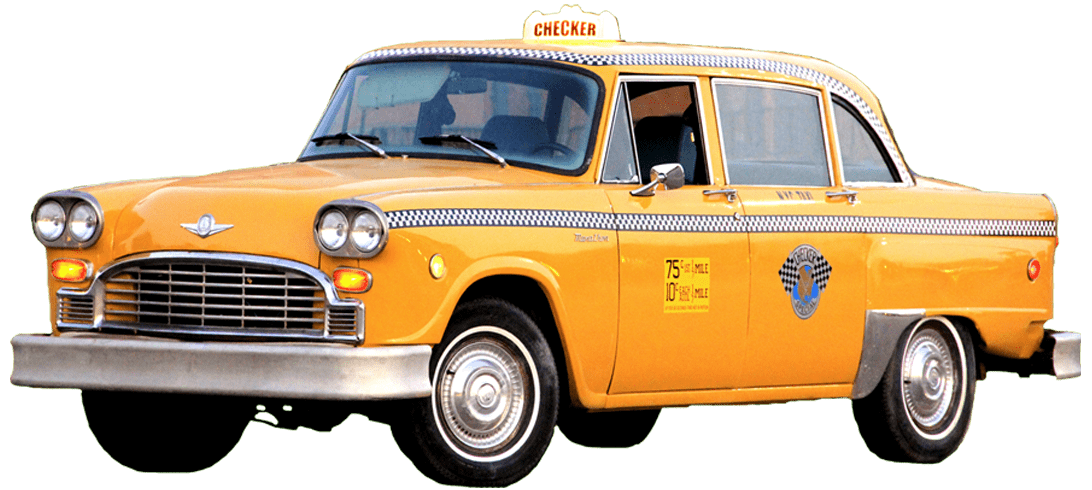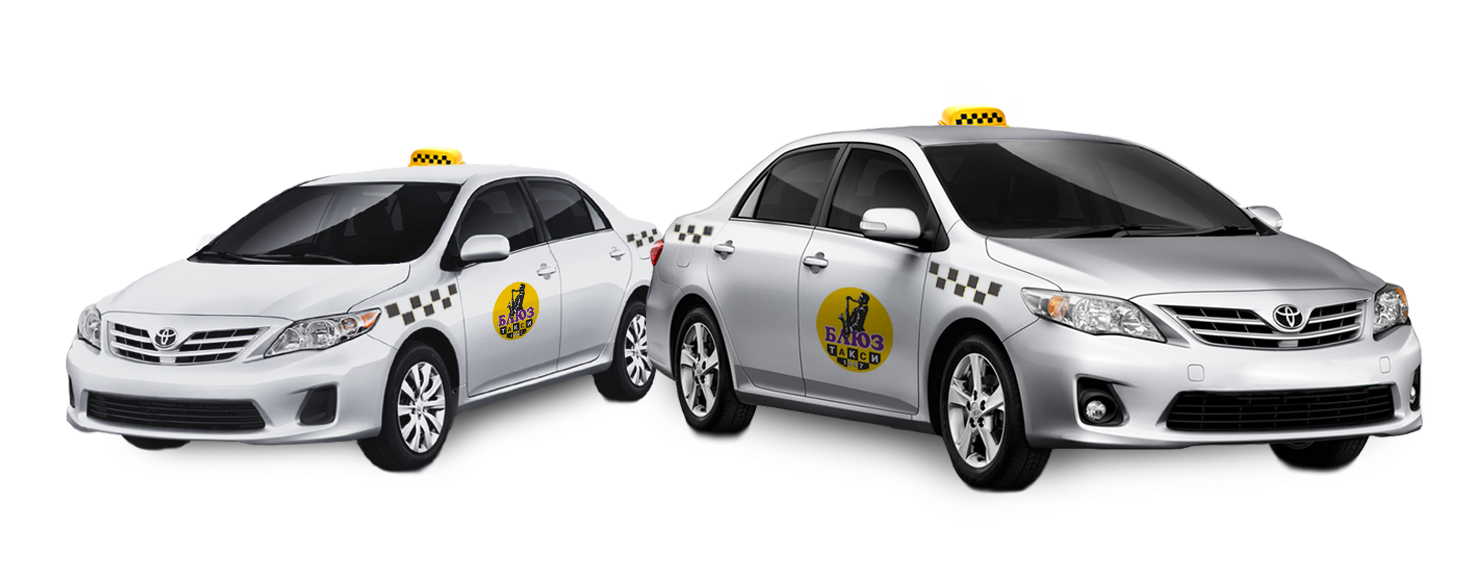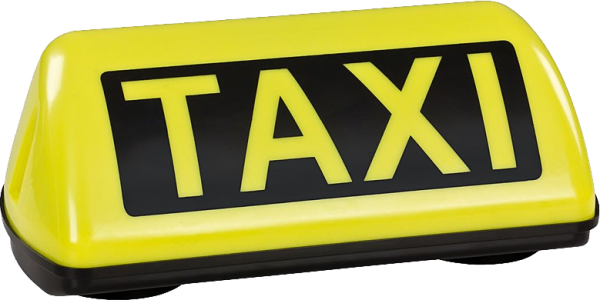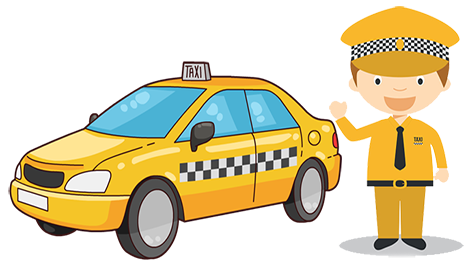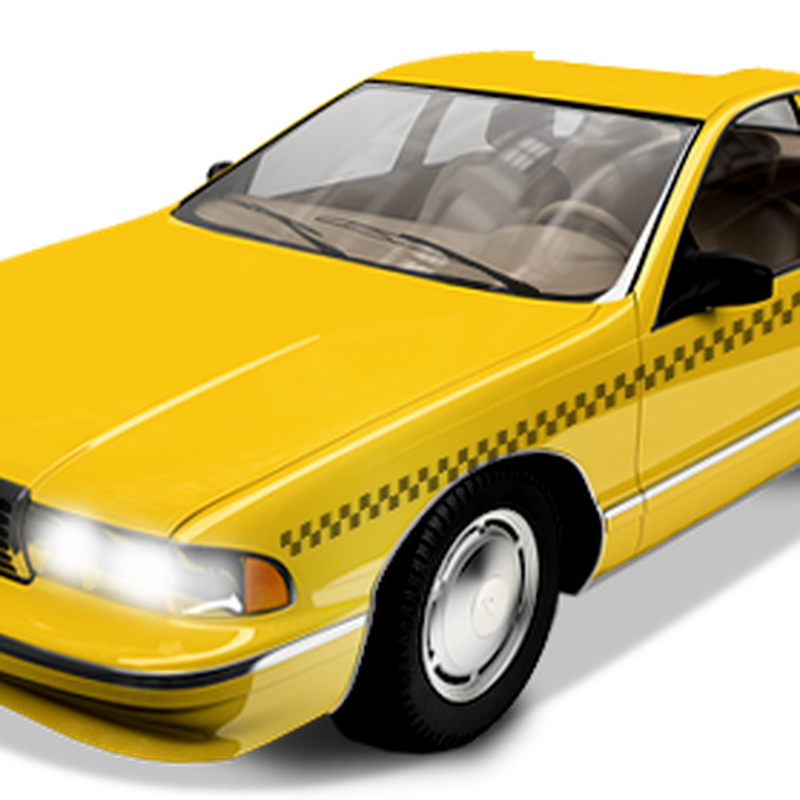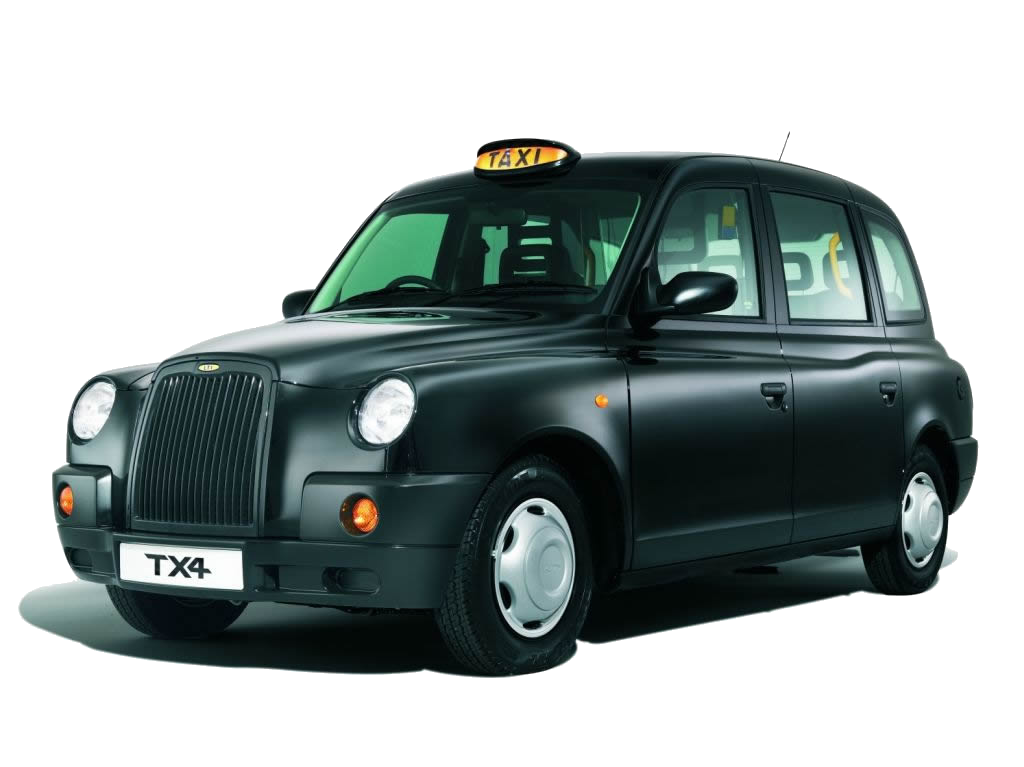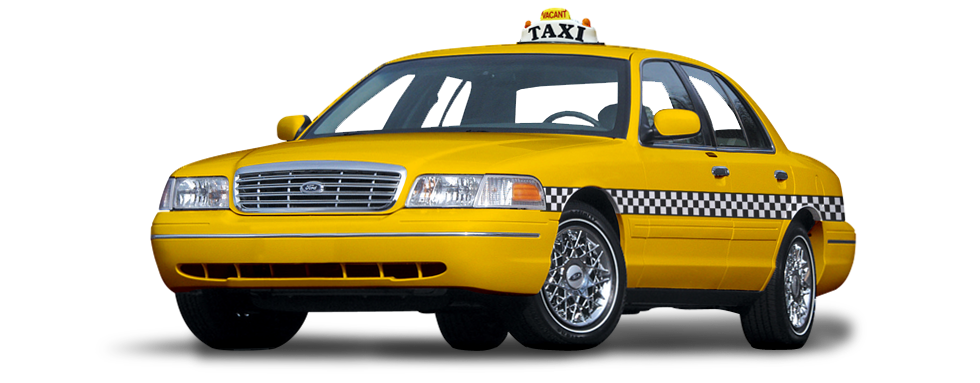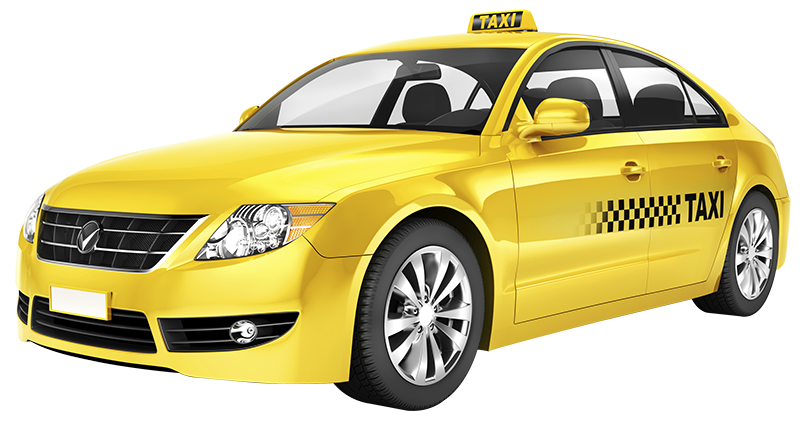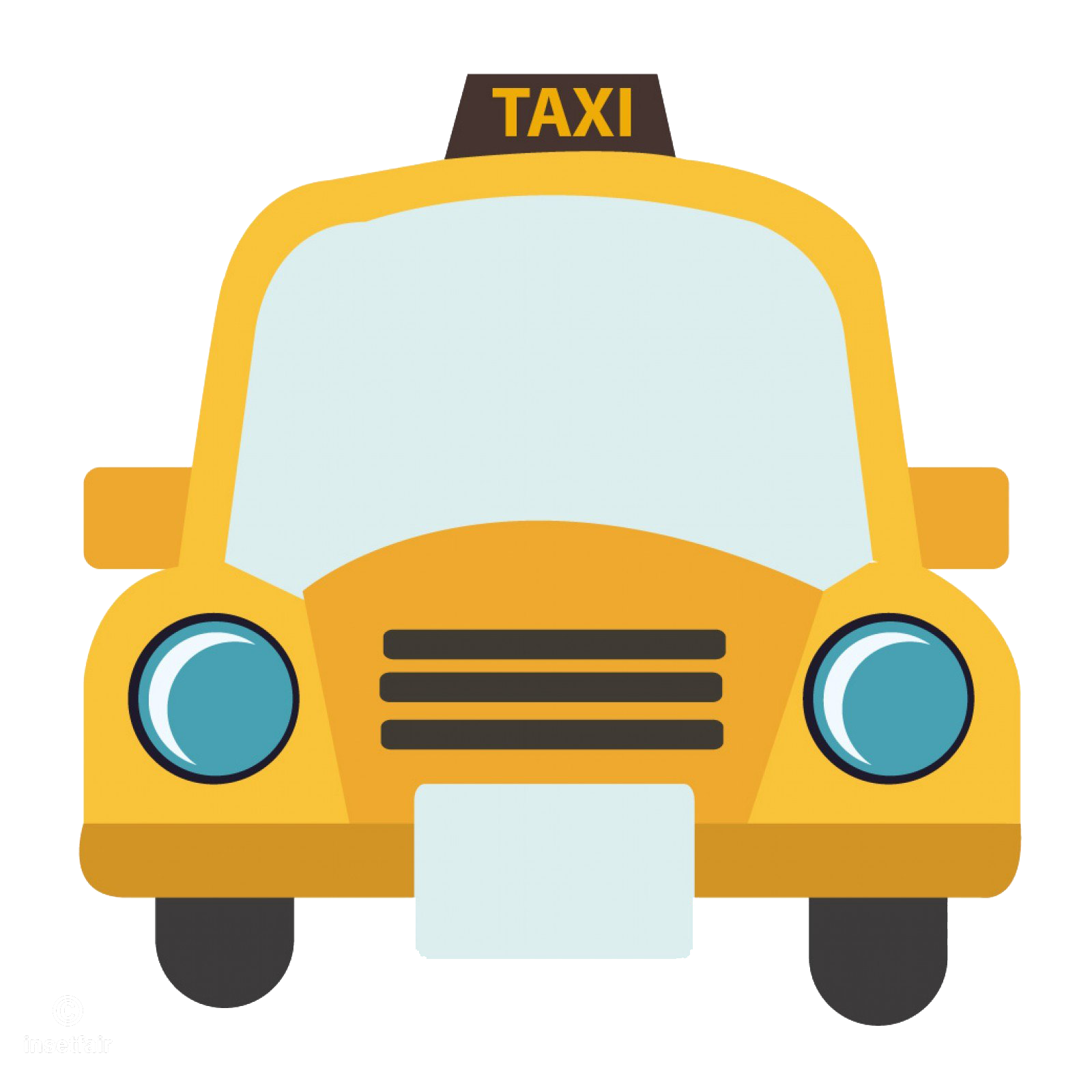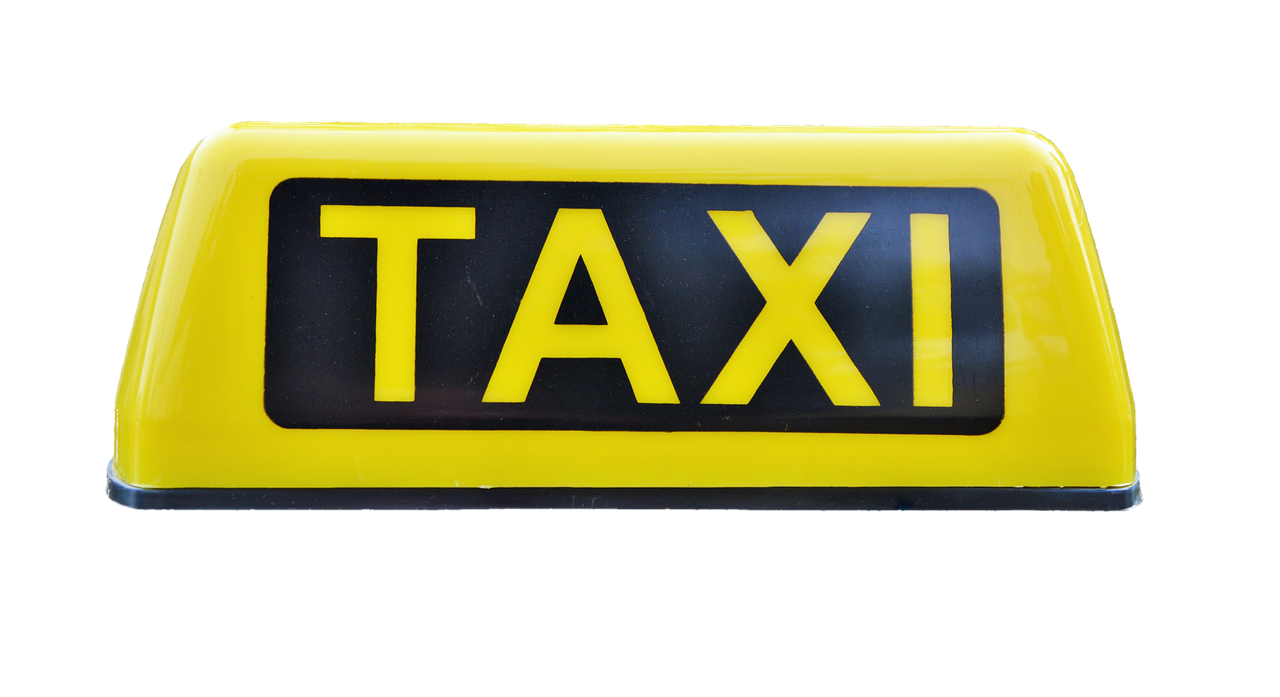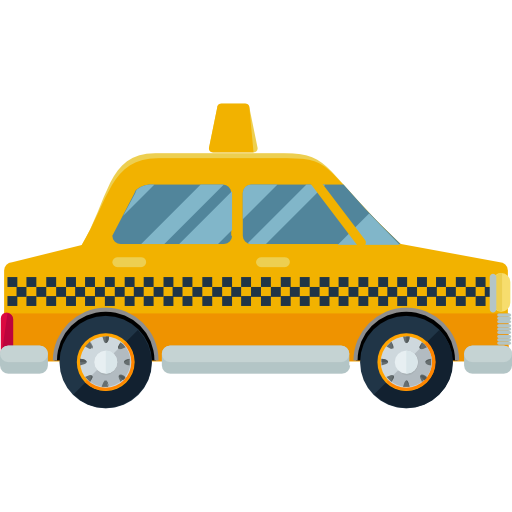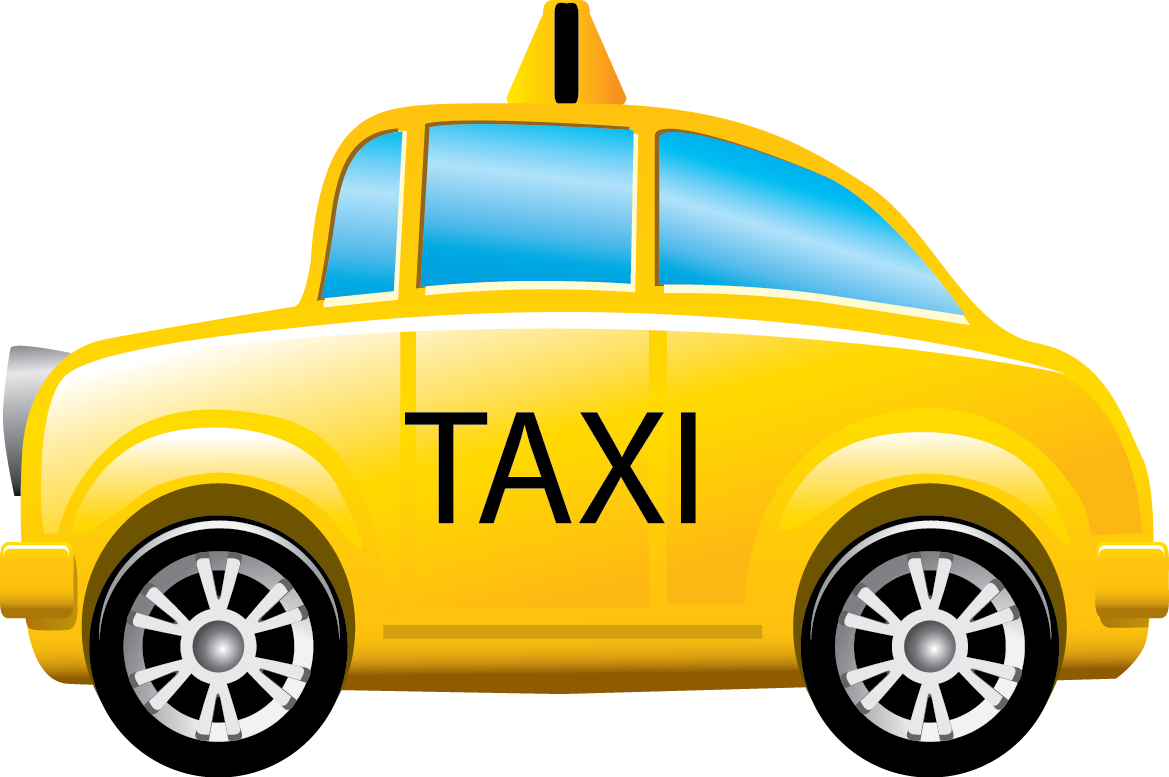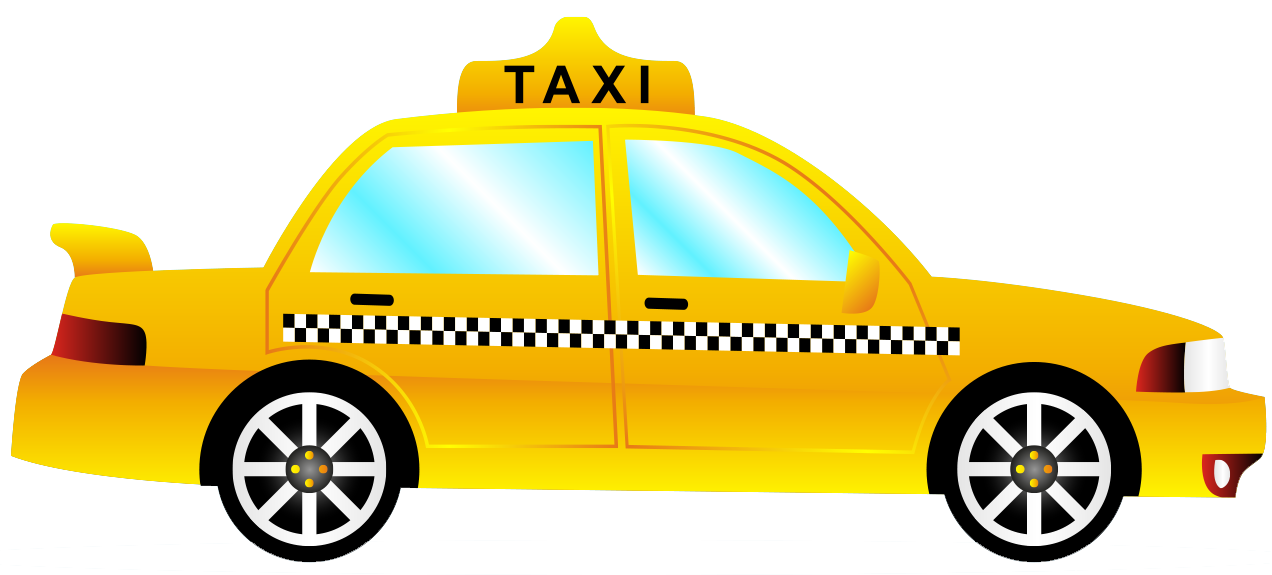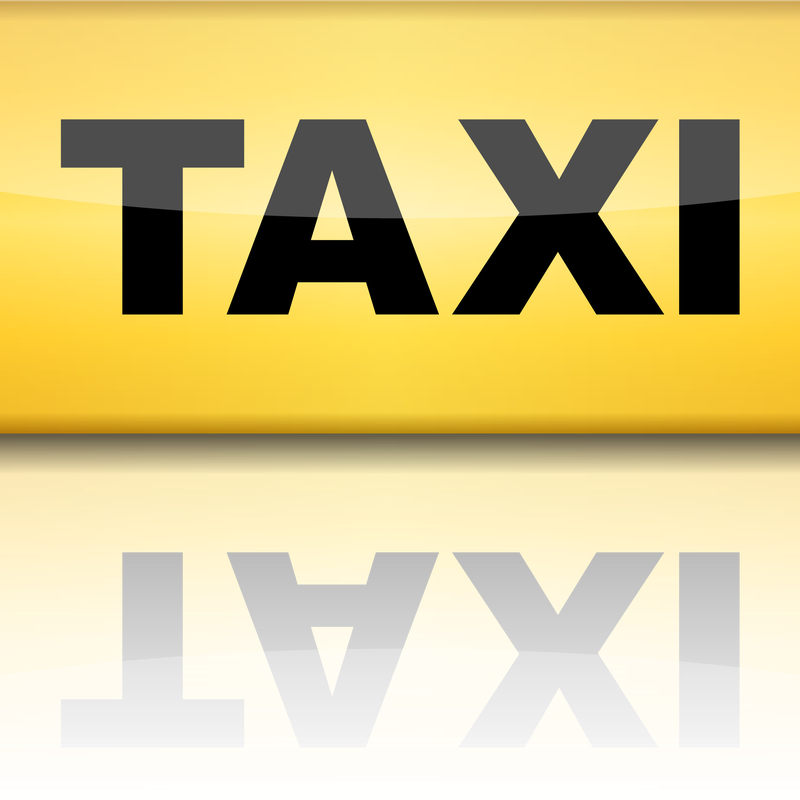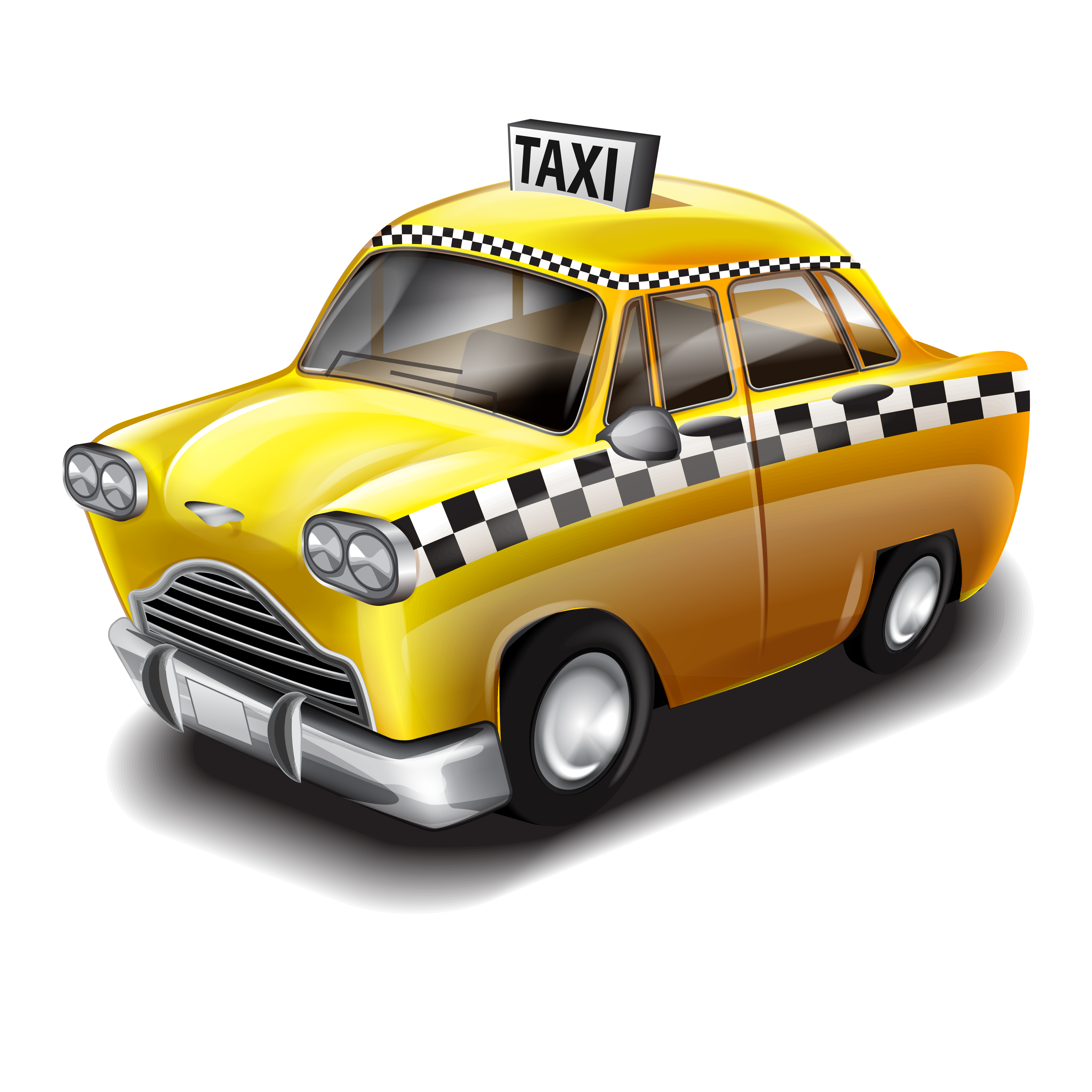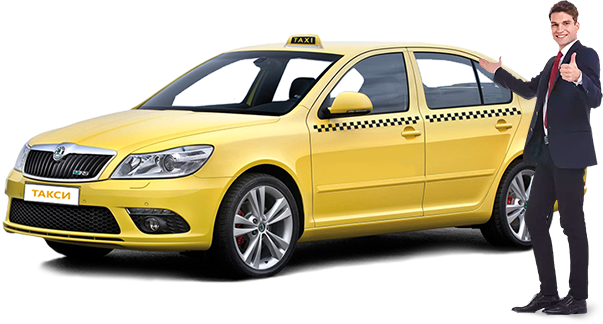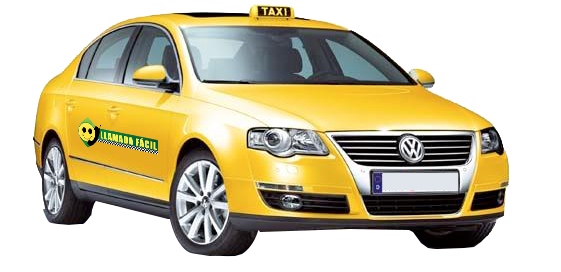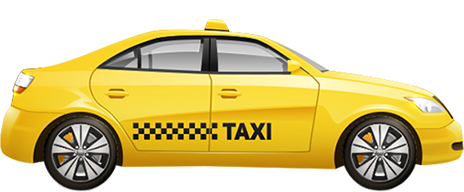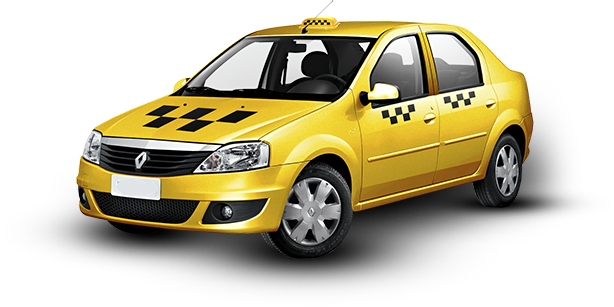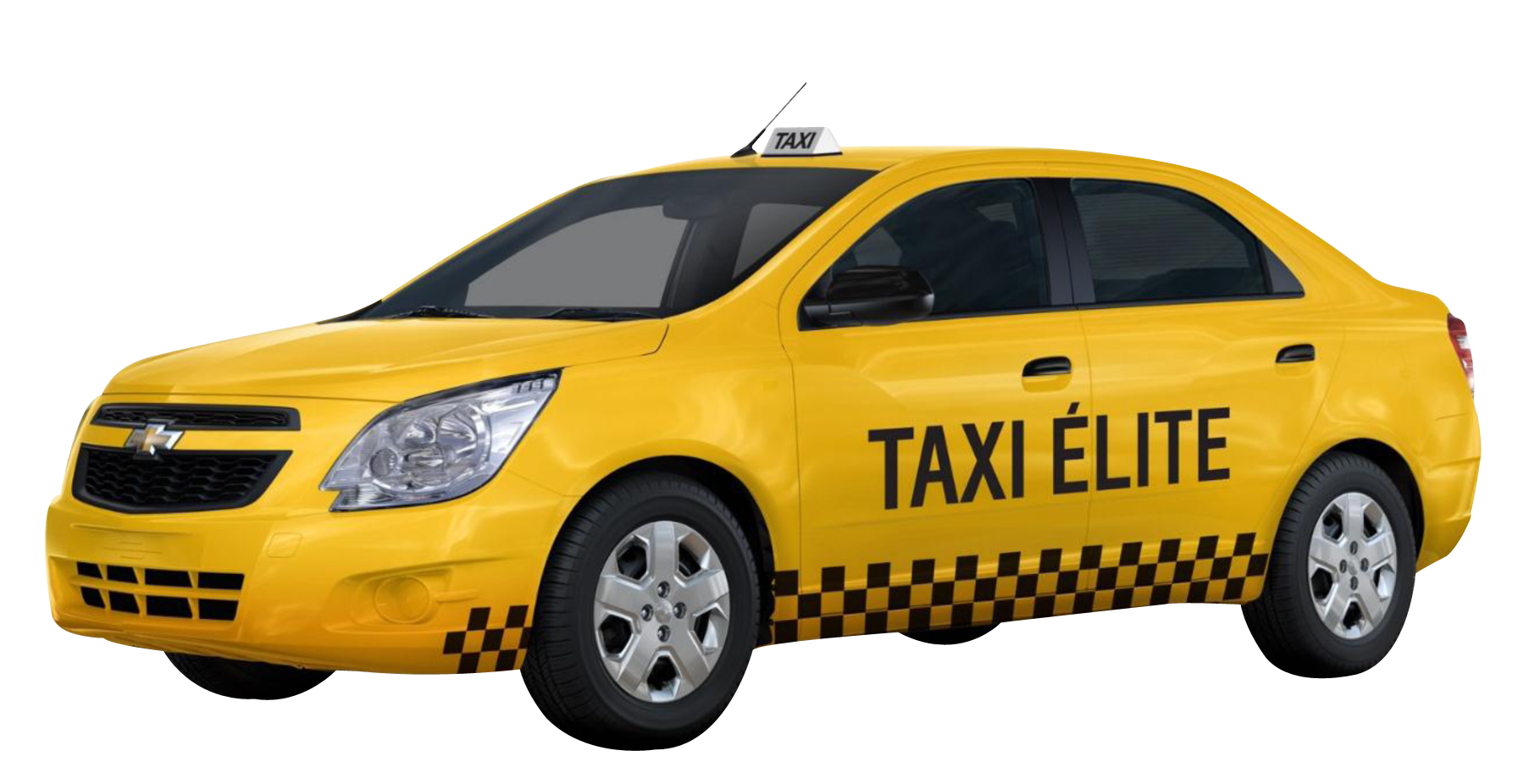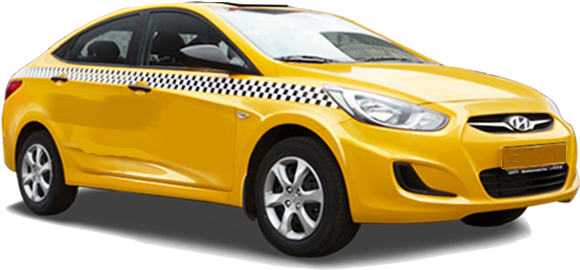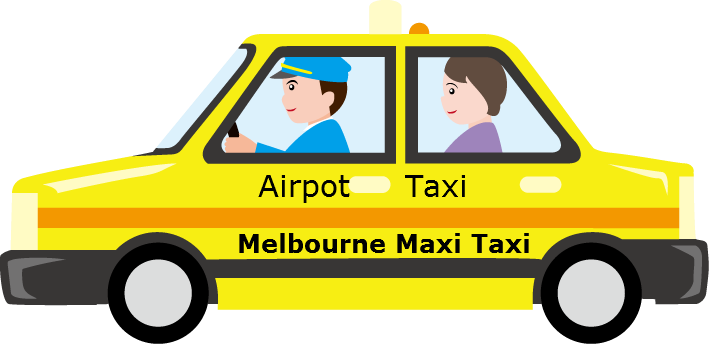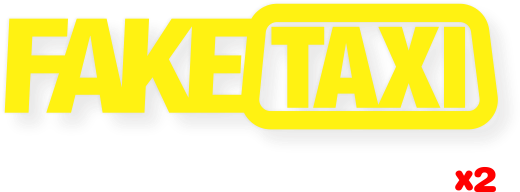Download top and best high-quality free Taxi PNG Transparent Images backgrounds available in various sizes. To view the full PNG size resolution click on any of the below image thumbnail.
License Info: Creative Commons 4.0 BY-NC
A taxi, often known as a cab or a taxicab, is a form of rental vehicle with a driver that is typically employed by a single passenger or small group of passengers for a non-shared journey. A taxicab transports customers to and from their desired place. This varies from public transportation, where the service provider determines the pick-up and drop-off sites rather than the consumers, while demand responsive transportation and share taxis give a hybrid bus/taxi option.
There are four main types of taxicabs, each with somewhat different names in various countries:
Hackney carriages, often known as public hire, hailed or street taxis, are taxis that may be hailed anywhere in the world.
Vehicles permitted for pre-booking only, often known as minicabs or private hire taxis.
Taxibuses, often known as jitneys or jeepneys in underdeveloped nations, operate on pre-determined routes characterized by many stops and several independent passengers.
Limousines are specialty vehicles that must be pre-booked in order to operate.
Although the types of vehicles and the processes of regulating, recruiting, dispatching, and negotiating remuneration vary greatly from nation to country, there are many common traits. Some jurisdictions have enacted additional laws for ridesharing services as a consequence of disagreements over whether they should be regulated like taxicabs.
The word “taxicab” is a combination of the words “taximeter” and “cabriolet.” “Taximeter” is derived from the German word taxameter, which was derived from the previous German word “Taxanom.” “Taxe” (pronounced tax-eh) is a German term that means “tax,” “charge,” or “charge scale.” “Taxia” is a Medieval Latin term that also meaning “taxation” or “charge.” To the extent that (taxidi) currently meaning “journey” in Greek originally signified an organized military march or campaign, “taxi” may eventually be traced to from meaning “to set in a definite order” in Ancient Greek, as in ordering an orderly battle line or ordaining the payment of taxes. The word meter comes from the Greek word v (metron), which means “measure.” A “cabriolet” is a horse-drawn vehicle derived from the French term “cabrioler” (“jump, caper”), Italian “capriolare” (“to somersault”), and Latin “capreolus” (“to leap, caper”) (“roebuck”, “wild goat”). The word has taken on the connotation of a convertible automobile in most European languages.
Beginning on March 9, 1898, the first meters were installed in Paris taxicabs. They were initially known as taxibread, but on October 17, 1904, they were renamed taximètres.
The phrase “taxicab” was adopted from London by Harry Nathaniel Allen of The New York Taxicab Company, who brought the first 600 gas-powered taxicabs into New York City from France in 1907.
It was named after Franz von Taxis, of the family of Thurn and Taxis, a 16th-century postmaster for Philip of Burgundy, and his nephew Johann Baptiste von Taxis, General Postmaster of the Holy Roman Empire, according to a folk-etymology. Both established rapid and dependable mail systems across Europe (conveying letters, with some post routes transporting people).
Horse-drawn carriages for hiring In the early 17th century, hackney carriage services began to operate in both Paris and London. In London, in 1605, the first known public hackney carriage service for hire was established. Innkeepers in London began renting carriages around 1625, and the first taxi station opened on the Strand outside the Maypole Inn in 1636. Parliament established the Hackney Carriage Act in 1635, making horse-drawn carriages permissible for rent. Innkeepers rented out coaches to merchants and travelers. In 1654, Parliament passed another “Ordinance for the Regulation of Hackney-Coachmen in London and the Places Adjacent,” and the first hackney-carriage licenses were given in 1662.
Nicolas Sauvage established a comparable business in Paris in 1637. His cars were dubbed fiacres after the primary vehicle depot, which was said to be located next to a shrine to Saint Fiacre. (The French name fiacre is still used to designate a hired horse-drawn vehicle, whereas the German term Fiaker is used to refer to the same thing, notably in Austria.)
Download Taxi PNG images transparent gallery
- Taxi Yellow PNG Photo
Resolution: 2699 × 2008
Size: 213 KB
Image Format: .png
Download
- Taxi Yellow PNG Cutout
Resolution: 641 × 421
Size: 82 KB
Image Format: .png
Download
- Taxi Yellow PNG Images
Resolution: 800 × 420
Size: 208 KB
Image Format: .png
Download
- Taxi Yellow PNG Photos
Resolution: 470 × 143
Size: 84 KB
Image Format: .png
Download
- Taxi Yellow Transparent
Resolution: 530 × 325
Size: 207 KB
Image Format: .png
Download
- Taxi Logo
Resolution: 2400 × 2400
Size: 104 KB
Image Format: .png
Download
- Taxi Nyc
Resolution: 800 × 323
Size: 37 KB
Image Format: .png
Download
- Taxi Nyc PNG
Resolution: 2229 × 1057
Size: 176 KB
Image Format: .png
Download
- Taxi Logo PNG
Resolution: 1024 × 1024
Size: 63 KB
Image Format: .png
Download
- Taxi Nyc PNG Pic
Resolution: 488 × 242
Size: 38 KB
Image Format: .png
Download
- Taxi Nyc PNG File
Resolution: 711 × 382
Size: 115 KB
Image Format: .png
Download
- Taxi
Resolution: 1341 × 980
Size: 57 KB
Image Format: .png
Download
- Taxi PNG
Resolution: 700 × 259
Size: 142 KB
Image Format: .png
Download
- Taxi PNG Pic
Resolution: 512 × 512
Size: 22 KB
Image Format: .png
Download
- Taxi Car
Resolution: 512 × 512
Size: 7 KB
Image Format: .png
Download
- Taxi Car PNG
Resolution: 512 × 512
Size: 6 KB
Image Format: .png
Download
- Taxi Car PNG Pic
Resolution: 512 × 440
Size: 4 KB
Image Format: .png
Download
- Taxi Car PNG File
Resolution: 512 × 512
Size: 13 KB
Image Format: .png
Download
- Taxi Car PNG Image
Resolution: 981 × 980
Size: 25 KB
Image Format: .png
Download
- Taxi Car PNG Photo
Resolution: 699 × 439
Size: 93 KB
Image Format: .png
Download
- Taxi Car PNG Cutout
Resolution: 980 × 828
Size: 29 KB
Image Format: .png
Download
- Taxi Car PNG Images
Resolution: 626 × 366
Size: 89 KB
Image Format: .png
Download
- Taxi Logo PNG Pic
Resolution: 960 × 480
Size: 41 KB
Image Format: .png
Download
- Taxi Car PNG Photos
Resolution: 1500 × 550
Size: 110 KB
Image Format: .png
Download
- Taxi Car Transparent
Resolution: 512 × 512
Size: 8 KB
Image Format: .png
Download
- Taxi Car PNG Clipart
Resolution: 550 × 554
Size: 239 KB
Image Format: .png
Download
- Taxi Logo PNG File
Resolution: 1490 × 591
Size: 20 KB
Image Format: .png
Download
- Taxi Car PNG Picture
Resolution: 935 × 418
Size: 353 KB
Image Format: .png
Download
- Taxi Car PNG HD Image
Resolution: 960 × 372
Size: 199 KB
Image Format: .png
Download
- Taxi Car PNG Image HD
Resolution: 1000 × 523
Size: 295 KB
Image Format: .png
Download
- Taxi Car No Background
Resolution: 1092 × 490
Size: 164 KB
Image Format: .png
Download
- Taxi PNG File
Resolution: 1482 × 570
Size: 557 KB
Image Format: .png
Download
- Taxi Logo PNG Image
Resolution: 600 × 300
Size: 195 KB
Image Format: .png
Download
- Taxi PNG Image
Resolution: 470 × 260
Size: 98 KB
Image Format: .png
Download
- Taxi PNG Photo
Resolution: 800 × 800
Size: 509 KB
Image Format: .png
Download
- Taxi PNG Cutout
Resolution: 1024 × 767
Size: 353 KB
Image Format: .png
Download
- Taxi PNG Images
Resolution: 980 × 383
Size: 330 KB
Image Format: .png
Download
- Taxi PNG Photos
Resolution: 800 × 422
Size: 389 KB
Image Format: .png
Download
- Taxi Transparent
Resolution: 512 × 512
Size: 13 KB
Image Format: .png
Download
- Taxi PNG Clipart
Resolution: 1600 × 1600
Size: 412 KB
Image Format: .png
Download
- Taxi Logo PNG Photo
Resolution: 1280 × 697
Size: 613 KB
Image Format: .png
Download
- Taxi PNG Picture
Resolution: 512 × 512
Size: 25 KB
Image Format: .png
Download
- Taxi PNG HD Image
Resolution: 512 × 512
Size: 18 KB
Image Format: .png
Download
- Taxi PNG Image HD
Resolution: 1169 × 777
Size: 111 KB
Image Format: .png
Download
- Taxi No Background
Resolution: 1272 × 575
Size: 118 KB
Image Format: .png
Download
- Taxi Logo PNG Cutout
Resolution: 512 × 512
Size: 17 KB
Image Format: .png
Download
- Taxi Logo PNG Images
Resolution: 800 × 800
Size: 74 KB
Image Format: .png
Download
- Taxi Yellow
Resolution: 4167 × 4167
Size: 3337 KB
Image Format: .png
Download
- Taxi Yellow PNG Clipart
Resolution: 1077 × 335
Size: 21 KB
Image Format: .png
Download
- Taxi Yellow PNG Picture
Resolution: 603 × 324
Size: 248 KB
Image Format: .png
Download
- Taxi Yellow PNG HD Image
Resolution: 561 × 272
Size: 152 KB
Image Format: .png
Download
- Taxi Yellow PNG Image HD
Resolution: 464 × 192
Size: 92 KB
Image Format: .png
Download
- Taxi Yellow No Background
Resolution: 614 × 307
Size: 183 KB
Image Format: .png
Download
- Taxi Yellow PNG Images HD
Resolution: 1805 × 926
Size: 920 KB
Image Format: .png
Download
- Taxi Yellow PNG Free Image
Resolution: 580 × 270
Size: 272 KB
Image Format: .png
Download
- Taxi Yellow PNG
Resolution: 711 × 344
Size: 18 KB
Image Format: .png
Download
- Taxi Yellow PNG Pic
Resolution: 520 × 192
Size: 26 KB
Image Format: .png
Download
- Taxi Yellow PNG File
Resolution: 1565 × 1290
Size: 91 KB
Image Format: .png
Download
- Taxi Yellow PNG Image
Resolution: 500 × 297
Size: 208 KB
Image Format: .png
Download
